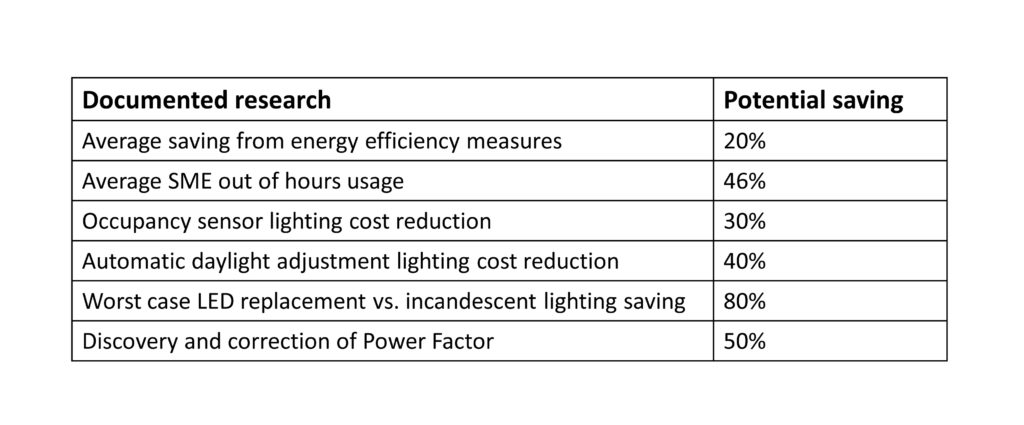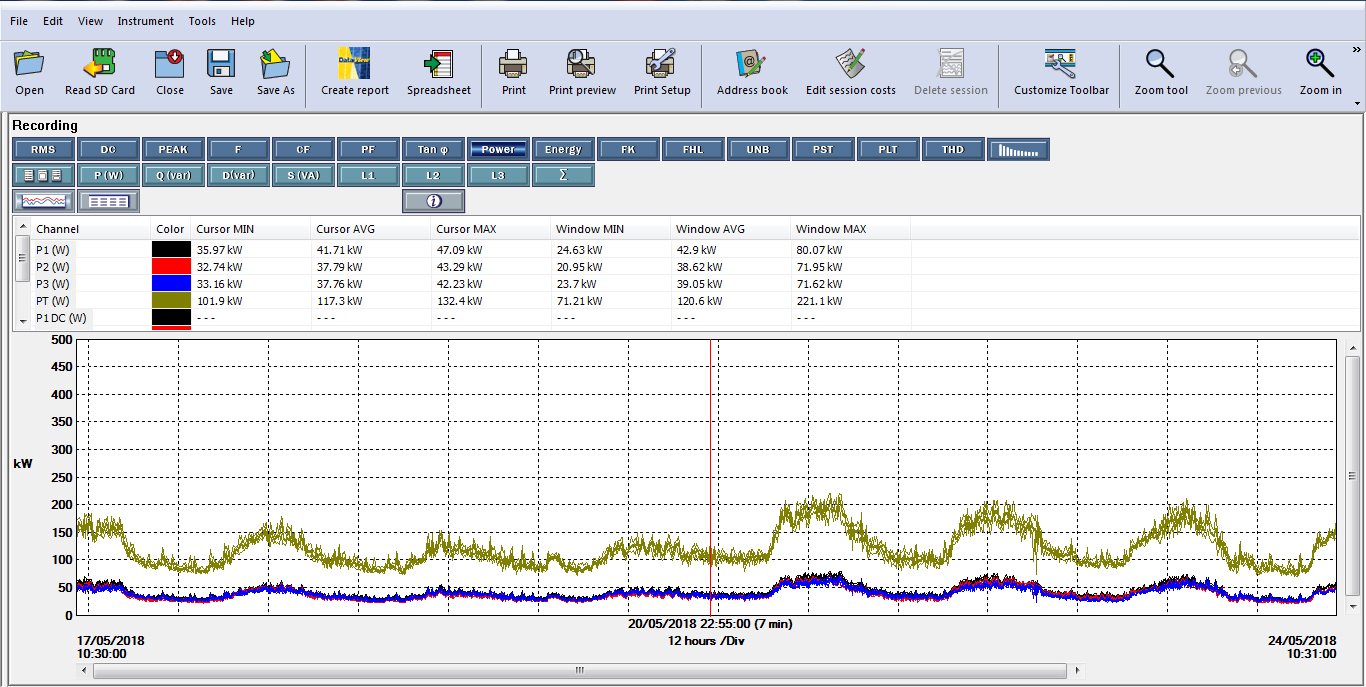Studies by the Carbon Trust show savings of up to 20% can be achieved through energy efficiency measures. Monitoring energy used 24 hours a day can identify out of hours usage, which accounts for 46% of energy consumption in UK SME’s according to a recent British gas smart meter survey. Office equipment plays a significant role in the energy consumption of a small business, and turning off non-essential equipment at the end of the day can achieve savings of 12%. Office equipment left on standby during Bank Holidays and weekends will cost the average SME up to £6,000 per year. Up to 40% of a building’s electricity use is accounted for by lighting, and installation of occupancy sensors, daylight sensors or photocells, and replacing existing lighting with LED modules, can reduce electricity costs by between 30% and 80%.



